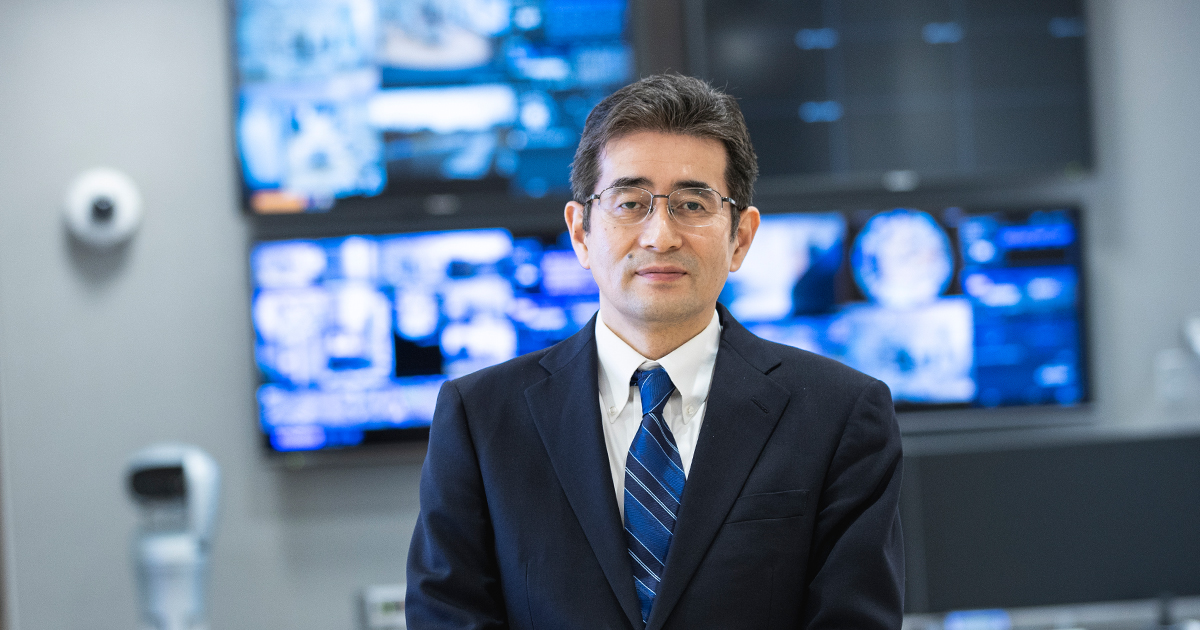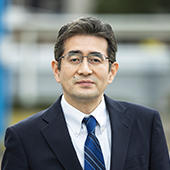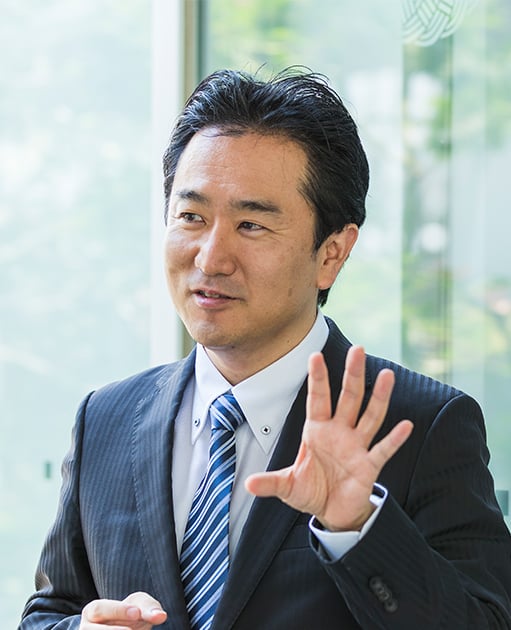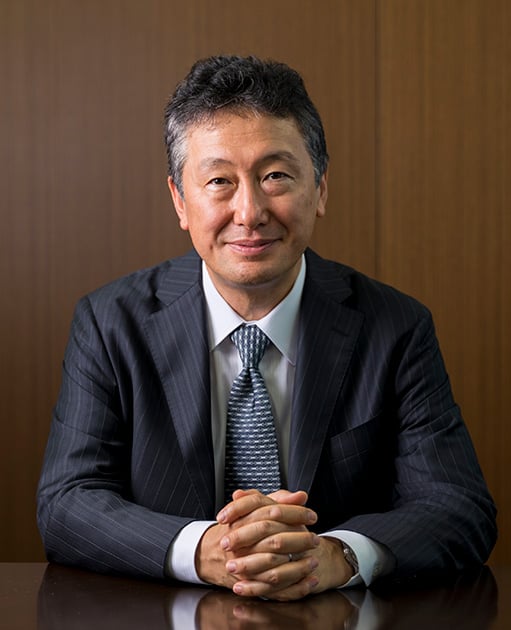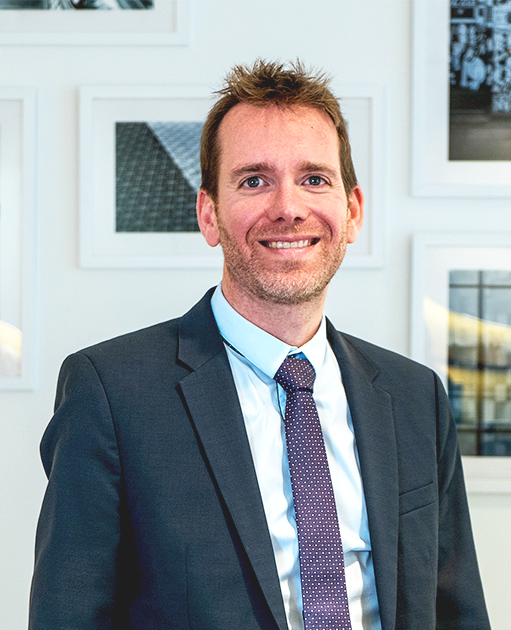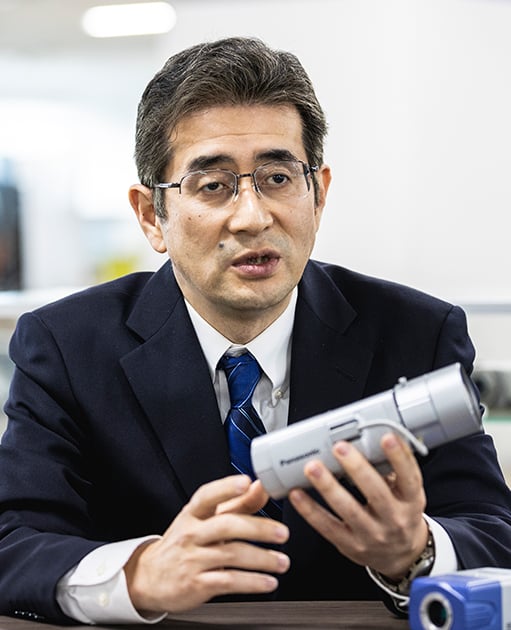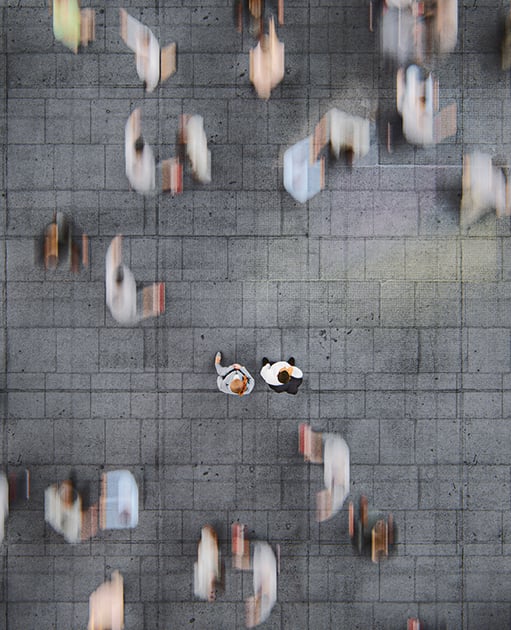The Corporate Technology Division serves as the backbone of i-PRO’s technology in general, providing support for the creation of leading-edge technologies, planning and development by product teams working at the forefront of the industry, and bolstering the skills of engineers working on a wide range of i-PRO products, including intelligent surveillance, public safety, and industrial and medical vision modules.
Speaking from his perspective as an engineer, Makoto Takakuwa, who as head of Research & Development plays a major role in i-PRO’s ongoing emergence as a world-class company. Offering an engineer’s perspective, Mr. Takakuwa shared his views on the importance of R&D at i-PRO and its future direction.
As connoisseurs of advanced technology, we’re assuming the responsibilities for design and development both now and in the future.
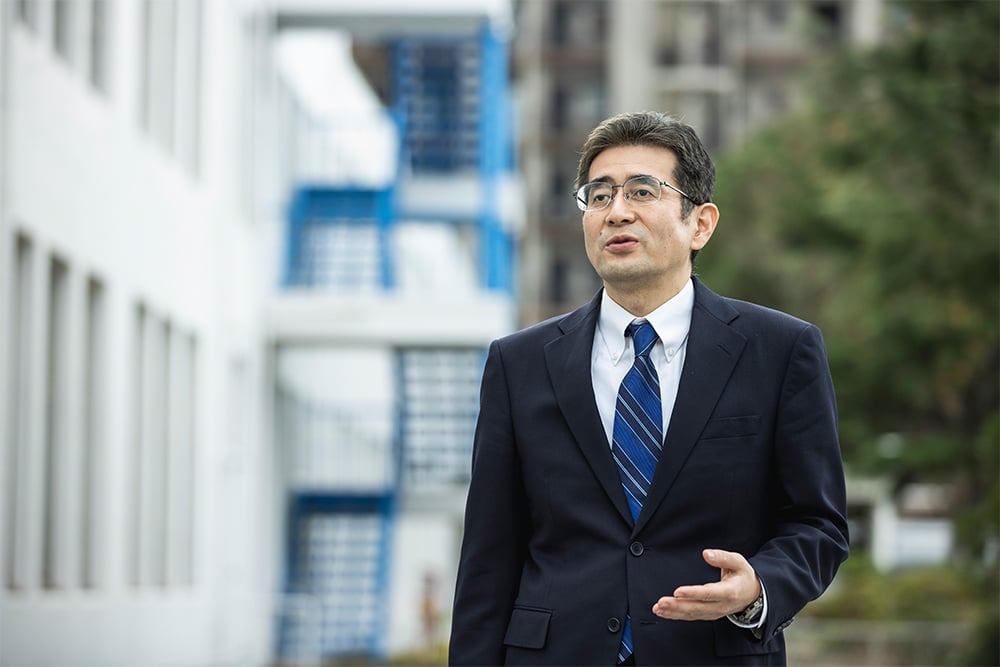
On September 11, 2001, the day of the terrorist attacks on the United States, you happened to be there.
Yes, it was during my first business trip to the US since I had joined the company, and that morning I was calling on a sales company in New Jersey. The local staff had welcomed me warmly, but the mood quickly changed. Walking over to where people had gathered in front of a television, I witnessed the moment the World Trade Center collapsed. From that point, everything became chaotic. Rumors circulated about bombs being set off around the city, and it seemed like everyone was agitated and suspicious. It was then that I came to a first-hand realization of how important it was to protect the security and safety of society.
This turned out to be the fundamental experience that led me to think: “We have to make a security camera that keeps working, under any circumstances.” So it was on September 11, 2001, that I truly came to understand the immensity of the challenges we were facing.
I can sense the importance of the projects in which i-PRO is involved. Could you please tell us about the role that R&D plays at i-PRO?
Working closely in collaboration with the product division, R&D is the part of the organization entrusted with both supporting the advanced development of future core technologies and technology management. By integrating the functions of planning and development, i-PRO is able to rapidly pinpoint market needs, speedily commercialize products at appropriate prices, and deliver them to society. At the same time, we’re able to maintain i-PRO’s leadership in the marketplace through the continuous creation of leading-edge core technologies that stand at the forefront of our times. So I would say these are our two main roles.
Specifically, what kind of development is i-PRO presently engaged in?
First would be video processing technology centered on surveillance cameras. At the core of i-PRO is sensing technology that collects a variety of information—sound and distance for example—and converts it into data. In addition to development related to these technologies, we're working on developing components, including hardware technologies centered on cameras, software that puts the hardware to best use, and even the materials used to make the products.
However, not all our development is conducted in-house. We may form strategic partnerships with various device manufacturers and system integrators to come up with products together, or we may opt for products that are already on the market and incorporate them into our systems to get optimal results. We openly adopt and utilize a wide variety of products, and this enables us to quickly harness the latest technology and form partnerships in system configuration that we believe will bring benefits to our customers.
Also, to achieve objectives more speedily and efficiently, we design the basic structure of our products around modules and quickly develop a product lineup by combining modules. Using updated modules also enables us to achieve quicker development, which means we’ll always maintain leading-edge performance and deliver the best products to end-users.
Truly professional engineers will usher in a new era.
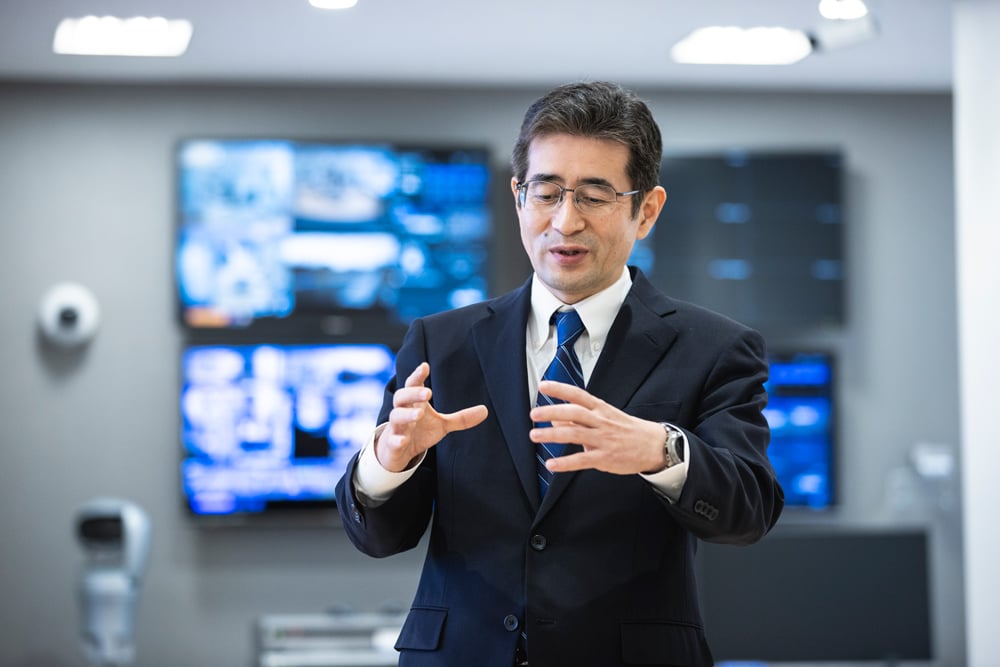
What are some of the technological innovations that i-PRO has achieved so far in the security camera industry?
The first security cameras in Japan were developed by Matsushita Electric Industrial (now Panasonic), back in 1957. In the 60-plus years since then, we’ve developed a number of technologies and functions that have now become the industry standard, and have contributed to the evolution of security cameras.
For example, our “Super Dynamic” function expands the range of brightness that can be captured, so that images are clear and not blacked out even in areas where illumination levels are mixed, such as by store entrances, or the “Auto Back Focus” function, which automatically adjusts to the appropriate focus even when the lens changes by repositioning the camera’s internal image sensor. These have created a new standard of functionality in the evaluation criteria for surveillance cameras, which were previously based only on qualities such as sensitivity and resolution. These technologies owe their results to the unique perspectives of our engineers, who think about security camera issues around the clock, while obtaining hints from their discussions with end-users.
In 2006, we launched a line of network cameras and network recorders in response to the trends toward networking in society. At a time when the practice of transmitting videos on a network was still uncommon, i-PRO strongly promoted the networking of all system devices to ensure stable operation of continuously operating network monitoring systems that are in operation 24 hours a day, 365 days a year. And to ensure the overall quality of the system, i-PRO has also realized a method that integrates the functions of the camera, enabling it to act not only as the input component, but also perform on the recording side.
i-PRO’s technological innovation has been based on its comprehensive development capability, which is why it leads the industry. This year, I heard that the position of engineers has also changed due to a major overhauling of the internal organizational structure.
In the past, engineers engaged in development within their own sections, but from last spring, we moved to a system where the most appropriate members are assigned to each development project set by the business unit. The engineers are expected to produce the best results for each project.
The team members also change with each project, making for an extremely fluid organization.
i-PRO’s brand identity is “capturing the moment of truth, so that professionals can act.” Naturally, the technicians who support us must also be professionals. They are expected to practice everything with a global standard and provide the world’s top-level development capabilities to all i-PRO product divisions. The objective of this reorganization is also to challenge and develop our engineers as professionals.
If we only pursue our prescribed tasks, it will be impossible to keep up with the speed of technological innovation in the world. Simply being able to design electric circuits and software programs won’t be sufficient to keep pace with the world’s top-level engineers. We need to keep our antennae extended to the outside world, stay abreast of the world’s trends, and be able to act autonomously. We will support the growth of our engineers as an organization. Naturally, I fully support the growth of our engineers.
What initiatives do you have in place to bolster the growth of engineers?
We have a system called the “Tech Community,” where engineers gather with their colleagues in each field that they want to learn about, and practice learning from each other. It is not just a place to develop products, but a place where knowledge is mutually shared and improved. Through these initiatives, we will actively incorporate learning, not only from within but also from the outside. Currently, 13 communities, including the “Optical and Imaging Technology Community,” the “Mechatronics Technology Community” and others engage in activities on a weekly basis.
What kind of evolution is essential for making the most of sensing technology?

What kind of technologies do you expect will be needed in the future?
It's been said that the number of IoT devices, presently around 14 billion, will increase to 50 billion by 2025, and that the trend toward IoT, in which all things are connected to the Internet, will accelerate. In order to process data more quickly, the world is rapidly moving toward edge computing, in which AI processing currently done in the cloud is executed on the edge (terminal) side. As video is an extremely important item input into IoT devices, the need for improved AI processing capabilities and advanced sensing technologies will continue to grow. We see these changes as an opportunity for i-PRO to make a major leap forward, and we hope to refine our sensing technology to gain the trust of end-users in an even wider range of fields in the future.
What are the important factors for this?
In order to provide AI with highly accurate data, it’s necessary to have optimal lenses and design, device utilization technology that optimizes image sensors’ performance, housings that can withstand harsh environments, and signal processing algorithm design. To fully exploit the power of AI, the technology supporting AI has to evolve as well. For example, as AI continues to evolve, it will be necessary to convert the results of its decisions into actions. To do this, mechatronics technology is needed to control and operate machines at the micron level.
We, i-PRO, will return to our roots as a manufacturer to develop innovative and highly reliable video equipment that’s compatible with the most up-to-date technologies such as AI, and realistically provide data and a sense of operability that will meet the needs of professional users.
If AI becomes indispensable for sensing technology, will i-PRO engineers also require knowledge of AI?
It is not necessary for engineers themselves to have mastered AI algorithms. However, in order to know what AI can and cannot do, we’ll need to keep pace with the evolution of AI, and as engineers, we’ll need to maintain the top level of knowledge. Ultimately, this will lead to expanding the possibilities of sensing technology and solutions for more advanced customer issues.
Finally, Mr. Takakuwa, please tell us about your future vision of i-PRO, as someone who has been involved in the development of surveillance cameras for a long time.
People’s desire for safety and security is always unchanging, and to fulfill this universal desire, we at i-PRO want to achieve advanced, high-quality products.
All of i-PRO’s products are created by engineers who spend time in the field to understand our customers’ usage conditions and operational systems, and then they think through the overall user experience, including the user interface.
I would like to work on making sure that everyone understands the enthusiasm and feelings of the engineers who are behind the development of our technologies and products.
i-PRO sensing devices will enjoy a ubiquitous presence, and the professionals who use them will take charge in protecting the safety and security of the world. This is the kind of world I would like to create together with my colleagues at i-PRO.


